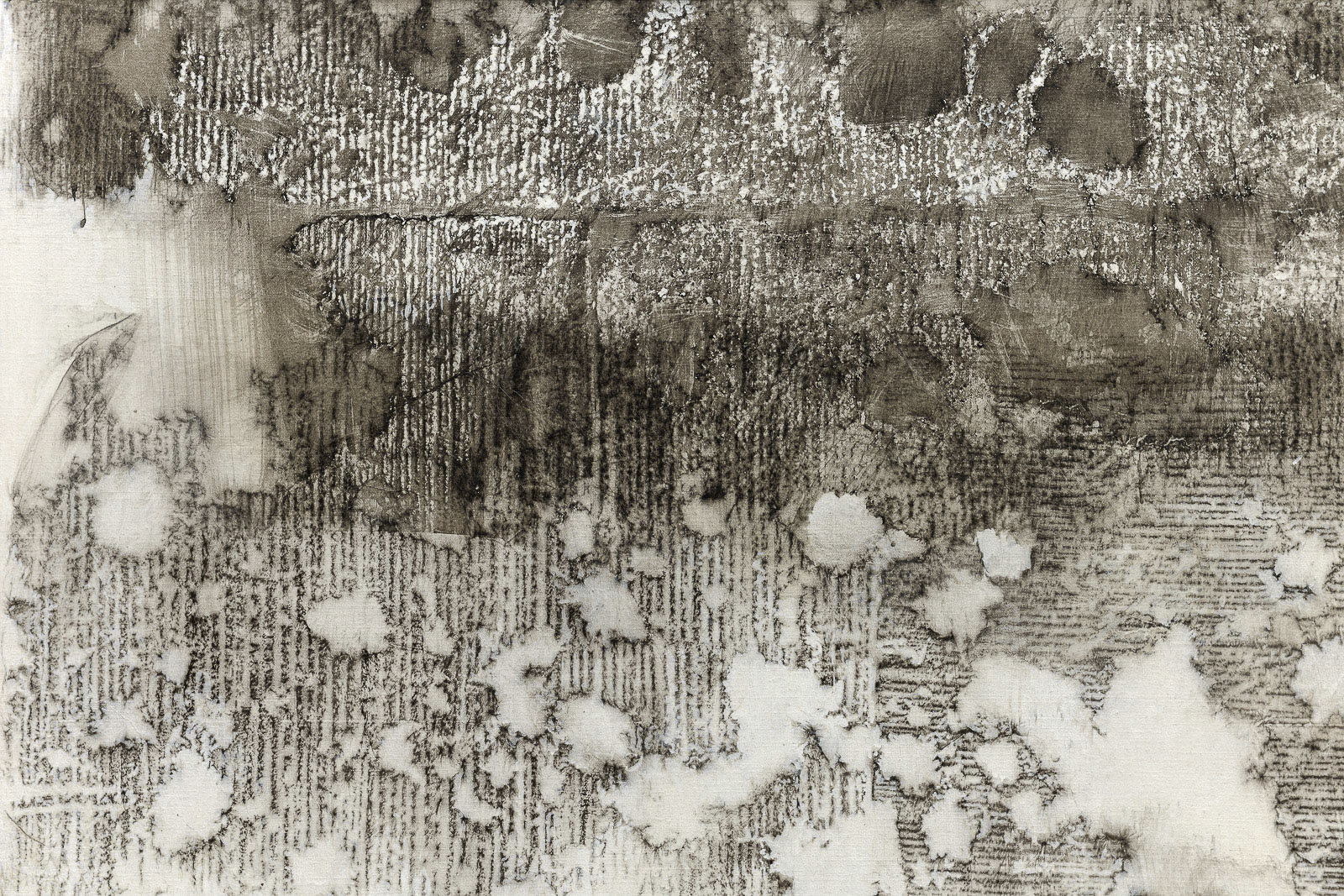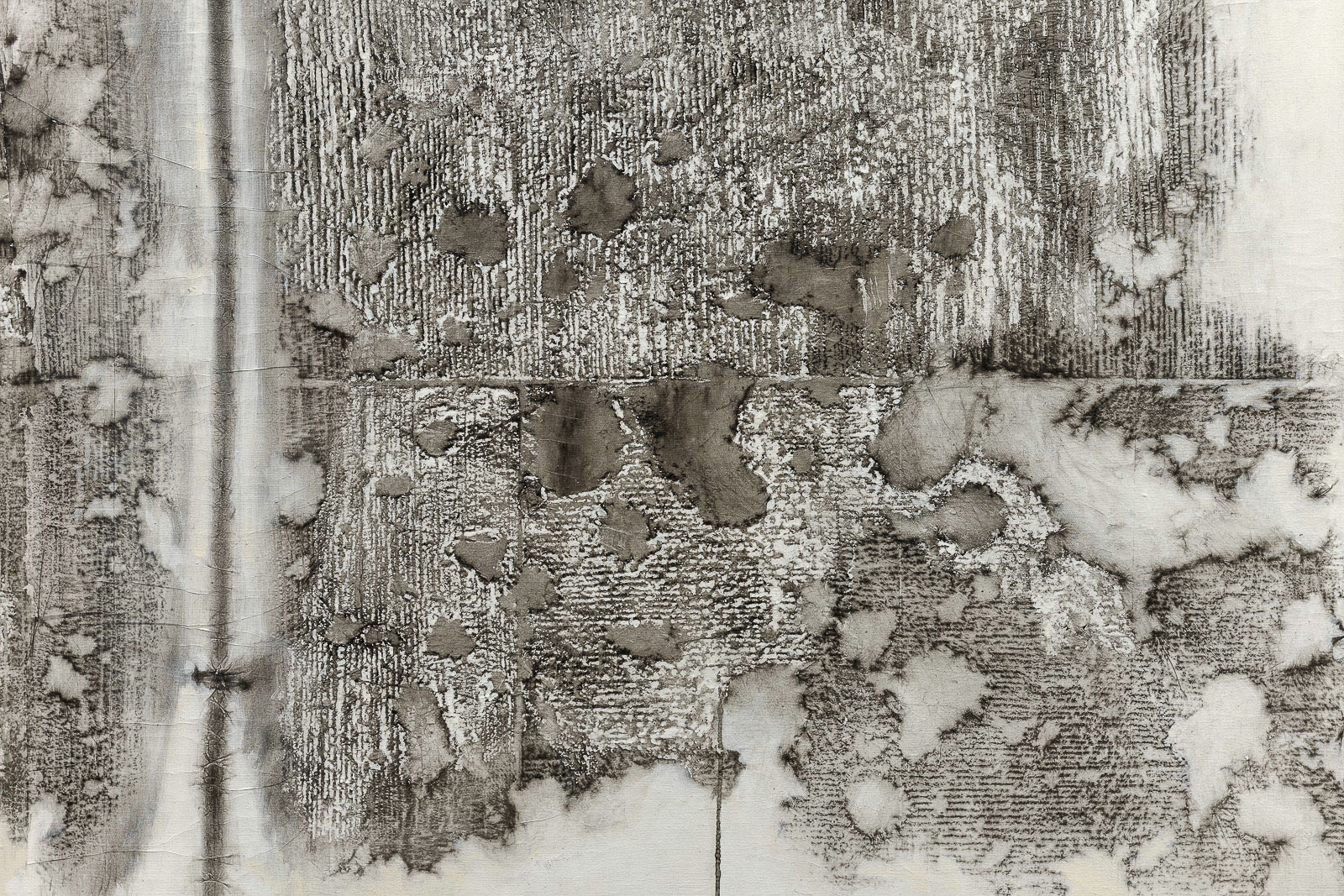Am Hegelplatz, 2009
Triptych with ink and acrylic on canvas; 126 × 203 cm | 126 × 156 cm | 77 × 127 cm
Nadia Kaabi-Linke has tracked down a place in which history has branded itself; and her artistic means serves as a catalyst for this scarred place to speak. The referential object is a piece
of the wall from the elevated-train arches at Berlin's Hegelplatz, in view of Humboldt University, where Hegel held the philosophy chair between 1818 and 1831. The work is a triptych, playing on
the philosophical motif of the dialectic progression from thesis to antithesis to synthesis. For Hegel, this represented the principle of the spirit finding itself and being reconciled with its history.
Kaabi-Linke's triptych denies this harmonic structure through a range of means: the discontinuous arrangements of the panels and its chief contents, bullet holes from World War II. These baleful
traces are caught in a narrow frame of German oak—a tree with ancient mythical importance that was again conjured up in the Nazi period. Following their mimetic transposition with wax and
ink on paper and canvas, the bullet holes look beautiful: strange concrete flowers; a solidified firework. Those wishing to extract reconciliation can view each bullet hole as the inversion of a
gravestone—where one is found, the target cannot have been hit.
As a historical marker, it recalls an unknown person who perhaps escaped with their life. The lower, third leaf of the triptych suggests both a break with this historical inheritance and its noteworthy
"sublation"—in the Hegelian sense of Aufhebung—into the present. Nowadays, a pricelist is fastened at this point on the wall, advertising what can be ordered from a café located in the elevated-train arches. Where once bombs rained down, life now vibrates.
of the wall from the elevated-train arches at Berlin's Hegelplatz, in view of Humboldt University, where Hegel held the philosophy chair between 1818 and 1831. The work is a triptych, playing on
the philosophical motif of the dialectic progression from thesis to antithesis to synthesis. For Hegel, this represented the principle of the spirit finding itself and being reconciled with its history.
Kaabi-Linke's triptych denies this harmonic structure through a range of means: the discontinuous arrangements of the panels and its chief contents, bullet holes from World War II. These baleful
traces are caught in a narrow frame of German oak—a tree with ancient mythical importance that was again conjured up in the Nazi period. Following their mimetic transposition with wax and
ink on paper and canvas, the bullet holes look beautiful: strange concrete flowers; a solidified firework. Those wishing to extract reconciliation can view each bullet hole as the inversion of a
gravestone—where one is found, the target cannot have been hit.
As a historical marker, it recalls an unknown person who perhaps escaped with their life. The lower, third leaf of the triptych suggests both a break with this historical inheritance and its noteworthy
"sublation"—in the Hegelian sense of Aufhebung—into the present. Nowadays, a pricelist is fastened at this point on the wall, advertising what can be ordered from a café located in the elevated-train arches. Where once bombs rained down, life now vibrates.
Falko Schmieder, "On the Track of History,"
in: Nadia Kaabi-Linke: Tatort, ed. Jamila Adeli
(Bielefeld: Kerber, 2010), 59.
(Bielefeld: Kerber, 2010), 59.

